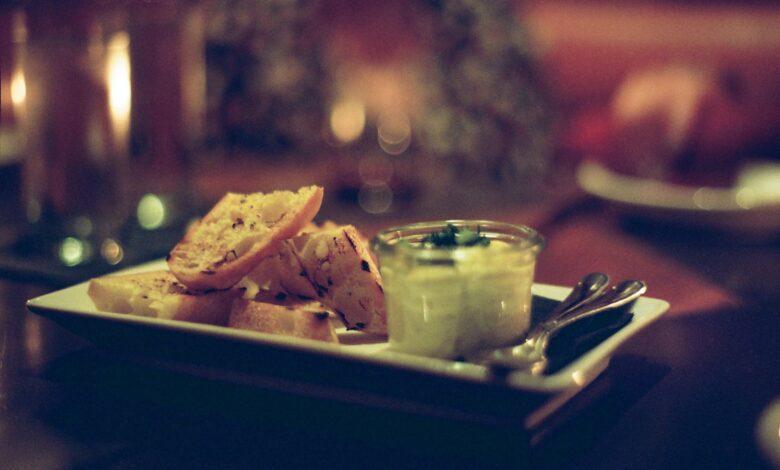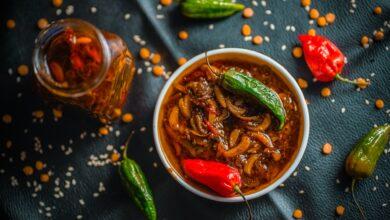The Ultimate Guide to Tapas in Barcelona 🍽️🇪🇸
Savoring the Flavors of Spain: A Culinary Journey Through Barcelona's Tapas Culture 🍷🍤

Introduction
Barcelona, a city steeped in culture and creativity, offers not only breathtaking architecture and captivating history but also an irresistible culinary experience. At the heart of this experience is the enchanting world of tapas. In this article, we present “The Ultimate Guide to Tapas in Barcelona: Must-Try Tapas Treats,” a journey into the soul of the city’s food culture.
The word “tapas” comes from the Spanish verb “tapar,” which means to cover. These small, flavorful dishes are a testament to the art of sharing, the heart of Spanish social life, and the embodiment of the phrase “good things come in small packages.” As we explore Barcelona’s tapas scene, you’ll discover the cultural significance, the rich history, and, most importantly, the mouthwatering treats that define this culinary tradition.
From the iconic Patatas Bravas to the king of Spanish cured ham, Jamón Ibérico, the sizzling Gambas al Ajillo, the classic Tortilla Española, and the quintessential Spanish beverage, Sangría, this guide will whet your appetite and inspire your wanderlust. Let’s embark on a culinary adventure through Barcelona, where every bite is a step deeper into the city’s heart and soul.

The Art of Tapas in Barcelona
Historical Origins of Tapas
The art of tapas in Barcelona has deep historical roots that stretch back centuries. The term “tapas” itself is derived from the Spanish verb “tapar,” which means “to cover” or “to lid.” The origins of tapas are intertwined with legends and practicality. One common legend suggests that slices of bread or ham were used to cover glasses of sherry to protect them from flies, eventually evolving into the delightful small dishes we know today.
Historically, tapas served a practical purpose, helping to keep insects out of drinks while also whetting the appetite. Over time, they evolved into a culinary tradition that has become an integral part of Spanish and, specifically, Catalan cuisine. Barcelona, as a culinary hub, has played a significant role in the development and popularization of tapas.
The Social and Culinary Importance of Tapas in Spanish Culture
Tapas are not just a form of food; they are a quintessential part of Spanish culture. The act of enjoying tapas is as much about socializing as it is about culinary delight. It’s common to see friends and family gathering at tapas bars, sharing stories, laughter, and a variety of small, flavorful dishes.
These bite-sized creations allow for a diverse range of flavors and ingredients, showcasing the culinary creativity of Spanish chefs. From patatas bravas (fried potatoes with spicy tomato sauce) to albondigas (meatballs), each tapa offers a unique taste experience. The emphasis on fresh, locally sourced ingredients is another hallmark of tapas, aligning with the Spanish tradition of valuing high-quality, seasonal produce.
In Spain, tapas culture encourages a relaxed and convivial atmosphere. It’s customary to order a variety of tapas, and the practice of “tapeo” involves hopping from one tapas bar to another, savoring different flavors at each stop. This communal way of dining fosters connections, making tapas a cherished aspect of Spanish social life.
The Tradition of Sharing and Communal Dining
The tradition of sharing and communal dining is at the heart of tapas culture. In many Spanish cities, including Barcelona, it’s not uncommon to see long communal tables in tapas bars, encouraging people to come together and share their culinary experiences. Whether it’s a small gathering of friends or a bustling tapas bar, the act of sharing these small dishes promotes a sense of togetherness and camaraderie.
The beauty of tapas lies in the variety and abundance of options available. This tradition allows diners to explore an array of flavors, textures, and ingredients in a single meal. It’s a delightful journey through Spanish cuisine, from the freshness of seafood to the richness of cured meats and cheeses. The concept of “raciones” (larger portions) and “pintxos” (similar to tapas but often served on skewers) further exemplify the Spanish enthusiasm for sharing food.
In Barcelona, as in the rest of Spain, the tradition of sharing and communal dining through tapas has become a cherished way of life, celebrating both the culinary artistry and the social connections that come with it.

Patatas Bravas – The Iconic Spanish Potato Dish
An Introduction to Patatas Bravas
Patatas Bravas, the beloved Spanish potato dish, is an iconic tapa that has won the hearts and palates of food enthusiasts both in Spain and around the world. This classic Spanish dish consists of crispy, golden-brown potato cubes served with a rich and slightly spicy tomato sauce, often accompanied by a creamy aioli drizzle. Patatas Bravas embodies the perfect combination of textures and flavors, making it a must-try when exploring Spanish cuisine.
The name “Bravas” is derived from the Spanish word for “fierce” or “wild,” which hints at the slightly spicy kick of the sauce. It’s a dish that can be found on the menu of almost every tapas bar in Spain, and each region may put its own unique twist on the recipe. In Barcelona, Patatas Bravas are a staple of the city’s vibrant culinary scene, and they’re an essential part of any tapas spread.
Preparing this Beloved Tapa
The preparation of Patatas Bravas involves a combination of simple ingredients but demands attention to detail to achieve its signature taste and texture. Here’s a basic recipe to give you an idea of how to make this classic dish:
- Potatoes: Begin with high-quality potatoes, typically waxy or all-purpose varieties like Yukon Gold or red potatoes. Peel and cut them into uniform bite-sized cubes.
- Frying: Heat vegetable oil in a deep pan or a fryer to around 350-375°F (175-190°C). Carefully fry the potato cubes until they are golden and crispy, which usually takes about 5-7 minutes. Ensure they are evenly cooked on all sides.
- Sauce: The sauce is the heart of Patatas Bravas. It’s made by sautéing onions and garlic in olive oil until they are soft. Then, add tomato sauce, a touch of vinegar, and a blend of spices like paprika and red pepper. Simmer the sauce until it thickens, and it should have a slight kick of heat.
- Assembly: Once the potatoes are fried to perfection, drain any excess oil. Place them on a serving plate and generously pour the bravas sauce over the top. For an extra layer of flavor, drizzle garlic aioli on the dish.
The Best Places to Savor Patatas Bravas in Barcelona
Barcelona, with its thriving food scene, offers a plethora of options for savoring Patatas Bravas. Here are a few places where you can enjoy this iconic Spanish dish in the heart of Catalonia:
- Bar Tomás: Located in the Sarrià-Sant Gervasi district, Bar Tomás is renowned for serving some of the best Patatas Bravas in the city. Their secret sauce recipe has been a closely guarded tradition for generations.
- Ciudad Condal: This bustling tapas bar along the Passeig de Gràcia is a favorite among locals and tourists alike. Their Patatas Bravas are a standout dish that perfectly complements their extensive tapas menu.
- Cervecería Catalana: Another gem along the Passeig de Gràcia, this popular spot offers delicious Patatas Bravas in a cozy, traditional setting.
- Bar Canete: Located in the heart of the Gothic Quarter, Bar Canete is famous for its delectable tapas. Their Patatas Bravas are renowned for their crispy perfection and flavorful sauce.
Exploring the diverse range of Patatas Bravas in Barcelona can be a delightful gastronomic adventure, and these recommendations are just the beginning of your culinary journey through the city’s vibrant tapas culture.
Jamón Ibérico – The King of Spanish Cured Ham
A Closer Look at Jamón Ibérico
Jamón Ibérico, often referred to as the “King of Spanish Cured Ham,” is a gastronomic treasure that hails from Spain. This exceptional ham is an integral part of Spanish culture and cuisine, known for its unrivaled flavor and unparalleled quality. The magic of Jamón Ibérico lies in the meticulous preparation, the unique breed of pigs, and the time-honored curing process.
The star of Jamón Ibérico is the Iberian pig, a breed native to the Iberian Peninsula. These pigs are known for their dark skin and the freedom they enjoy to roam in oak-filled meadows, feasting on acorns during the “montanera” season. It’s this diet, rich in acorns and outdoor exercise, that imparts the distinctive flavor and marbling to the ham.
After the pigs are slaughtered, the ham undergoes a lengthy curing process, which can last from one to several years. The result is a rich, savory, and marbled ham with a melt-in-your-mouth texture. Sliced thinly, it reveals an exquisite tapestry of flavors, from nutty and buttery notes to a hint of saltiness. In Spain, Jamón Ibérico is not just food; it’s a symbol of tradition and a source of immense pride.
The Art of Ham Carving
Carving Jamón Ibérico is not just a culinary task; it’s an art form in itself. The skill and precision required to carve the ham to perfection are highly regarded in Spain. Here are some key steps in the art of ham carving:
- Setup: Begin with the right tools, including a sharp, narrow-bladed knife and a sturdy ham holder. The ham should be secured firmly in the holder.
- First Cut: Make an initial incision to separate the skin from the meat. This allows you to work with the exposed meat.
- Slicing: The goal is to slice the ham as thinly as possible, creating almost translucent, wafer-thin slices. Start from the hip and work your way down to the hoof. The slices should be uniform and easy to pick up.
- Angle: Slice at a slight angle to maximize the surface area and enhance the ham’s flavors. The fat should glisten, and the meat should be tender.
- Presentation: Arrange the slices on a serving plate, maintaining their elegant, layered appearance. Serve immediately to preserve the ham’s freshness and flavor.
Where to Find the Finest Jamón Ibérico in Barcelona
Barcelona, a city known for its vibrant food culture, offers numerous opportunities to savor the finest Jamón Ibérico. Here are a few places where you can indulge in this exquisite Spanish delicacy:
- La Boqueria: The Mercat de Sant Josep de la Boqueria, often referred to simply as La Boqueria, is a famous food market in Barcelona. You’ll find stalls offering a variety of Jamón Ibérico, allowing you to taste different producers and types.
- El Xampanyet: This charming, traditional tapas bar in the El Born district is renowned for its outstanding selection of Jamón Ibérico. Enjoy it with a glass of cava, Barcelona’s sparkling wine.
- Casa Mari y Rufo: Located in the Gothic Quarter, this restaurant specializes in all things Iberian. Their Jamón Ibérico is a highlight, and they offer a range of cuts to suit your preferences.
- Can Culleretes: As one of Barcelona’s oldest restaurants, Can Culleretes boasts a delightful selection of Spanish hams, including Jamón Ibérico. Their historic ambiance adds to the overall experience.
Savoring Jamón Ibérico in Barcelona is not just a culinary adventure; it’s a cultural journey that introduces you to the heart and soul of Spanish gastronomy. Whether you’re a seasoned aficionado or new to the world of Spanish hams, the experience of indulging in this culinary masterpiece is an unforgettable one.
Gambas al Ajillo – Sizzling Garlic Shrimp
Introduction to the Flavorsome Gambas al Ajillo
Gambas al Ajillo, also known as Sizzling Garlic Shrimp, is a beloved Spanish dish that tantalizes taste buds with its bold and aromatic flavors. This classic tapa is a popular choice in Barcelona and throughout Spain. The dish features succulent shrimp cooked with a generous amount of garlic, olive oil, and a hint of red pepper flakes, creating a mouthwatering combination that captures the essence of Spanish cuisine.
The name itself is a delightful description of the dish: “gambas” means shrimp, “al” means with, and “ajillo” refers to garlic. As the name suggests, garlic plays a central role in this dish, infusing each shrimp with its rich, fragrant essence. The result is a sizzling, garlic-infused masterpiece that showcases the simplicity and depth of Spanish flavors.
Gambas al Ajillo is often served sizzling in a small clay pot, enhancing the overall experience. The combination of the sizzling sound, the aroma of garlic, and the flavors of the shrimp makes it a quintessential Spanish tapa that’s hard to resist.
Cooking this Garlic-Infused Delight
Preparing Gambas al Ajillo at home is a straightforward process that can deliver restaurant-quality results. Here’s a basic recipe to get you started:
Ingredients:
- 1 pound (450g) large shrimp, peeled and deveined
- 6-8 cloves of garlic, thinly sliced
- 1/4 cup (60ml) extra-virgin olive oil
- 1/2 teaspoon red pepper flakes (adjust to taste)
- 2 tablespoons fresh parsley, chopped
- Salt to taste
Instructions:
- Heat the Olive Oil: In a frying pan, heat the olive oil over medium heat. Add the sliced garlic and red pepper flakes. Sauté until the garlic becomes fragrant and turns golden, but be cautious not to burn it.
- Add the Shrimp: Once the garlic is golden, add the shrimp to the pan. Cook for about 2-3 minutes on each side or until they turn pink and opaque. Season with a pinch of salt.
- Garnish and Serve: Sprinkle the dish with chopped fresh parsley to add color and a burst of freshness. Serve the sizzling Gambas al Ajillo in the same pan or transfer it to a serving plate.
This delightful tapa is best enjoyed with some crusty bread to soak up the flavorful garlic-infused olive oil.
Notable Places for Gambas al Ajillo in Barcelona
In Barcelona, you’ll find an array of dining establishments that serve exceptional Gambas al Ajillo. Here are a few places where you can savor this delightful dish:
- Bar Pinotxo: Located in the Mercat de Sant Josep de la Boqueria, Bar Pinotxo is a popular spot known for its authentic Catalan cuisine. Their Gambas al Ajillo is a must-try and showcases the vibrant flavors of the market.
- Bar del Pla: This cozy restaurant in the El Raval neighborhood is known for its impressive tapas selection. Their Gambas al Ajillo is a standout dish that’s bound to satisfy your cravings.
- El Xampanyet: In the El Born district, El Xampanyet is renowned for its delectable tapas, and their Gambas al Ajillo doesn’t disappoint. Pair it with a glass of cava for a complete culinary experience.
- Cerveseria Catalana: A bustling tapas bar on the Passeig de Gràcia, Cerveseria Catalana is famous for its delightful tapas. Their Gambas al Ajillo is a crowd-pleaser, and the vibrant atmosphere adds to the enjoyment.
Savoring Gambas al Ajillo in Barcelona is a culinary adventure that immerses you in the authentic flavors of Spanish cuisine. Whether you’re a seafood enthusiast or a lover of vibrant, garlicky dishes, this classic tapa is sure to please your palate.
Tortilla Española – The Classic Spanish Omelette
An Overview of Tortilla Española
Tortilla Española, also known as the Spanish omelette, is a classic dish that holds a special place in Spanish cuisine. This humble yet iconic dish is a beloved staple in Spain and a must-try for anyone exploring the country’s culinary delights. The Tortilla Española is a delectable combination of eggs and potatoes, sometimes with the addition of onions, resulting in a flavorful, hearty, and versatile dish.
The primary ingredients for Tortilla Española are eggs and potatoes, along with olive oil and seasoning. Some variations include onions, which add a touch of sweetness to the dish. The dish is cooked in a round, flat pan, creating a thick omelette that is typically served in wedges or slices. It can be enjoyed hot or at room temperature, making it a convenient option for picnics, tapas, or a light meal.
Tortilla Española’s simplicity is part of its charm, and its widespread popularity makes it a true representation of Spanish comfort food.
Preparing this Egg and Potato Delight
Making Tortilla Española at home is relatively straightforward, but it requires a few key steps to ensure the perfect outcome. Here’s a basic recipe to guide you through the process:
Ingredients:
- 4-5 medium potatoes, peeled and thinly sliced
- 1 small onion, finely chopped (optional)
- 6 large eggs
- 1/4 cup (60ml) olive oil
- Salt and pepper to taste
Instructions:
- Potatoes: Heat the olive oil in a large frying pan over medium heat. Add the sliced potatoes and onions (if using). Season with salt and pepper. Cook until the potatoes are tender and slightly golden, stirring occasionally. This step can take around 20 minutes.
- Eggs: In a separate bowl, whisk the eggs and season them with salt and pepper.
- Combining: Drain excess oil from the potatoes, leaving only about 2 tablespoons in the pan. Pour the eggs over the potatoes. Gently mix them together to ensure the eggs coat the potatoes evenly.
- Cooking: Return the potato and egg mixture to the pan. Cook on low heat until the edges begin to set, which may take about 5 minutes.
- Flipping: Now, comes the challenging part – flipping the tortilla. Place a flat plate or lid that’s larger than the pan over the top. Carefully invert the pan so that the tortilla lands on the plate. Slide the tortilla back into the pan to cook the other side for another 5-7 minutes.
- Serving: Once the tortilla is fully cooked and has a slightly runny center, slide it onto a serving plate. Allow it to cool slightly and set before serving.
Savoring the Best Tortilla Española in Barcelona
In Barcelona, you’ll find numerous eateries and tapas bars that serve exceptional Tortilla Española. Here are a few places where you can enjoy this classic Spanish dish:
- Cerveceria Catalana: Located on the Passeig de Gràcia, this bustling tapas bar is celebrated for its extensive menu of tapas. Their Tortilla Española is a standout, with a creamy, perfectly cooked center.
- El Quim de la Boqueria: Situated in the Mercat de Sant Josep de la Boqueria, this renowned spot is known for its market-fresh ingredients. Their Tortilla Española is a must-try and embodies the essence of this beloved dish.
- Tapeo: In the heart of the Gothic Quarter, Tapeo offers a delightful selection of tapas, and their Tortilla Española is highly recommended. The cozy ambiance adds to the experience.
- Bar Tomas: Located in the Sarrià-Sant Gervasi district, Bar Tomas is celebrated for its rustic approach to Tortilla Española. The simplicity of their version showcases the essence of this classic dish.
Savoring Tortilla Española in Barcelona is a culinary journey that introduces you to the heart and soul of Spanish cuisine. Whether you prefer it with or without onions, hot or at room temperature, this iconic Spanish omelette is a true gastronomic delight that is not to be missed.
FAQs
Q. What Are the Best Times to Enjoy Tapas in Barcelona?
A. Tapas bars in Barcelona usually open in the late afternoon, so the best time to enjoy tapas is in the evening. Locals often head out for tapas between 8 PM and 10 PM.
Q. Is It Customary to Tip at Tapas Bars in Barcelona?
A.Tipping is common in Spain, but it’s not as generous as in some other countries. Leaving loose change or rounding up the bill is appreciated.
Q. Can I Find Vegetarian or Vegan Tapas Options in Barcelona?
A. Yes, many tapas bars offer vegetarian and vegan options, such as patatas bravas with aioli or roasted vegetable skewers.
Q. What Are Some Unusual Tapas Dishes to Try?
A. For those seeking unique flavors, Barcelona offers unconventional tapas like octopus with black garlic aioli or foie gras with caramelized apples.
Q. Are Reservations Needed for Tapas Bars?
A. Most tapas bars in Barcelona operate on a first-come, first-served basis, but it’s wise to arrive early, especially during peak dining hours.
Q. What’s the Best Way to Explore Tapas Bars in Barcelona?
A. Wandering through neighborhoods like El Raval, El Born, and Gracia is an excellent way to discover hidden tapas gems.
Conclusion
As our journey through the enchanting world of Barcelona’s tapas draws to a close, it’s a moment to savor the memories, the flavors, and the vibrant culture that makes this city a culinary wonderland. The art of tapas is not just about the food; it’s about the experience, the conversations, and the connections made over shared plates.
We invite you to embrace the art of tapas on your next visit to Barcelona. Explore the historic streets, strike up conversations with locals, and let your taste buds guide you through a tapestry of flavors. It’s not just about the Patatas Bravas or the Jamón Ibérico; it’s about the warmth and hospitality of a city that shares its heart through its food.
So, the next time you find yourself in Barcelona, make sure to savor the magic of tapas. Share laughter, stories, and, of course, these delectable small plates with friends and strangers alike. Barcelona’s tapas scene isn’t just about eating; it’s about celebrating life, one bite at a time. ¡Buen provecho!
UP NEXT



Facebook Comments